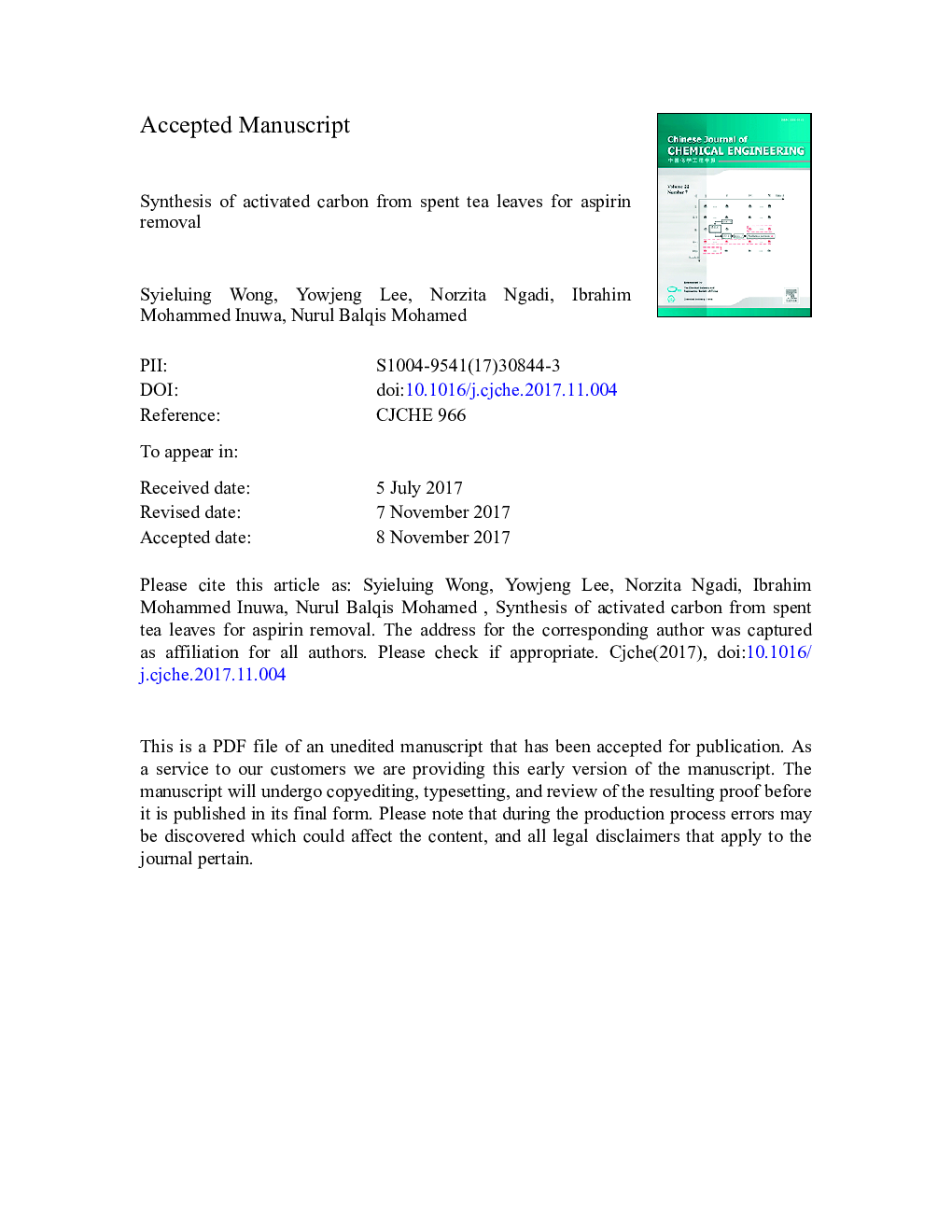| Article ID | Journal | Published Year | Pages | File Type |
|---|---|---|---|---|
| 6592885 | Chinese Journal of Chemical Engineering | 2018 | 29 Pages |
Abstract
Adsorption capacity of activated carbon prepared from spent tea leaves (STL-AC) for the removal of aspirin from aqueous solution was investigated in this study. Preliminary studies have shown that treatment with phosphoric acid (H3PO4) increased removal efficiency of STL-AC. Characterizations on STL-AC revealed excellent textural properties (1200 m2·gâ 1, 51% mesoporosity), as well as distinctive surface chemistry (1.08 mmol·gâ 1 and 0.54 mmol·gâ 1 for acidic and basic oxygenated groups, pHpzc = 2.02). Maximum removal efficiency of aspirin observed was 94.28% after 60 min when the initial concentration was 100 mg·Lâ 1, 0.5 g of adsorbent used, pH 3 and at a temperature of 30 °C. The adsorption data were well fitted to the Freundlich isotherm model and obeyed the pseudo-second order kinetics model. The adsorption of aspirin onto STL-AC was exothermic in nature (ÎHÏ´Â = â 13.808 kJ·molâ 1) and had a negative entropy change, ÎSÏ´ (â 41.444 J·molâ 1). A negative Gibbs free energy, ÎGÏ´ was obtained indicating feasibility and spontaneity of the adsorption process. The adsorption capacity of AC-STL (178.57 mg·gâ 1) is considerably high compared to most adsorbents synthesized from various sources, due to the well-defined textural properties coupled with surface chemistry of STL-AC which favors aspirin adsorption. The results demonstrate the potential of STL-AC as aspirin adsorbent.
Related Topics
Physical Sciences and Engineering
Chemical Engineering
Chemical Engineering (General)
Authors
Syieluing Wong, Yowjeng Lee, Norzita Ngadi, Ibrahim Mohammed Inuwa, Nurul Balqis Mohamed,
